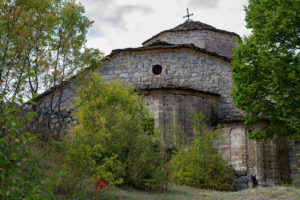Appropriately, on the day of Article 50, the guide tells me the ‘body of three naves’ was ‘reconstructed after the fire and looting of 1596’ by the first Elizabeth’s brexiteer, the Earl of Essex. Beware Boris, Essex lost his head a few years later after an attempted coup.
Faro was more fortunate than most southern cities when earthquake struck off the coast near Lisbon in 1755: there was little damage and the city replaced Lagos as regional capital. It was the diocesan seat even when the capital was elsewhere, having been established in 1577. The cathedral has, nonetheless, ‘suffered’ (in the words of the English guide) ‘later restorations’ as a result of its ‘ascendancy’ that were ‘specially notorious in the reshaping of the church and in the wood carvings of the chapels’.
Not much enamoured of the Baroque, we had expected the interior to be notorious in other ways, although the tower and three chapels retain their medieval character that is more congenial to us. Not so, however, there is a restraint even in the Chapel of Our Lady of Joy ‘goldened in 1752.’ The red-painted organ is especially magnificent.
Tiles are for us the delight of any Portuguese church and, as might be expected in a cathedral, Faro has them in abundance. Those in a chapel within one of the gatehouses of the old walls of Vila-a-dentro, are even more delightful, as is its dedication to the Pregant Virgin. The cathedral tiles are fine, even so.
The gothic chapel (XIII-XIV centuries) was dedicated to St Dominic in the XVII century but retains a tomb of the 1500s. A little later, Mannerist rather than Baroque, are the sacristy with an embossed picture of Our Lady of the Assumption of 1624 and the main chapel with the Virgin, St Peter and St Paul from the late 1500s. This latter was restored in 1752, although its ‘”Carpet” type tiles, of 1664’ also vie for attention.
We found much to interest us inside the cathedral, including its ‘museological’ items, among which was an early music manual, written on leather and still on open display.
Outside is the beautiful and restrained garden that we had glimpsed before through its gate. Apart from lovely planting this has the mid-thirteenth century wall with its staggered buttresses and mass dial. Guaranteed to keep any child enthralled while parents (or grandparents) visit the interior is the ‘Bones Chapel’ of 1664, that has to be illustrated rather than described.
Children would probably want to join adults in mounting the tower, which commands a splendid view across the city as well as over the lagoons towards the Atlantic Ocean. It was memorable enough even on one of the few cold and windy days of our visit but on a fine day we might have stayed there for an hour, with storks coming and going from their nests on nearby buildings, not to mention those on the counterwight of a huge crane.










